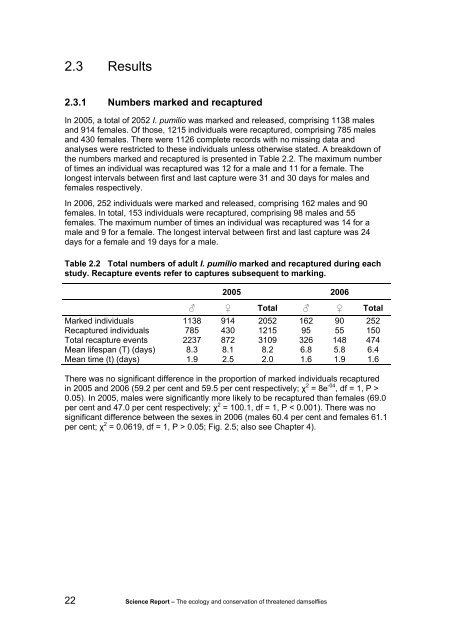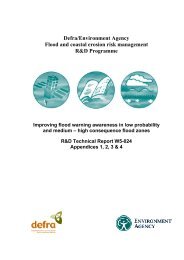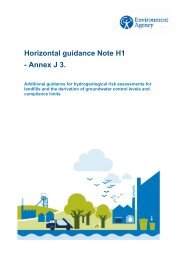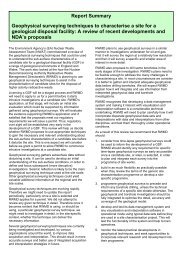The ecology and conservation of threatened damselflies
The ecology and conservation of threatened damselflies
The ecology and conservation of threatened damselflies
Create successful ePaper yourself
Turn your PDF publications into a flip-book with our unique Google optimized e-Paper software.
2.3 Results<br />
2.3.1 Numbers marked <strong>and</strong> recaptured<br />
In 2005, a total <strong>of</strong> 2052 I. pumilio was marked <strong>and</strong> released, comprising 1138 males<br />
<strong>and</strong> 914 females. Of those, 1215 individuals were recaptured, comprising 785 males<br />
<strong>and</strong> 430 females. <strong>The</strong>re were 1126 complete records with no missing data <strong>and</strong><br />
analyses were restricted to these individuals unless otherwise stated. A breakdown <strong>of</strong><br />
the numbers marked <strong>and</strong> recaptured is presented in Table 2.2. <strong>The</strong> maximum number<br />
<strong>of</strong> times an individual was recaptured was 12 for a male <strong>and</strong> 11 for a female. <strong>The</strong><br />
longest intervals between first <strong>and</strong> last capture were 31 <strong>and</strong> 30 days for males <strong>and</strong><br />
females respectively.<br />
In 2006, 252 individuals were marked <strong>and</strong> released, comprising 162 males <strong>and</strong> 90<br />
females. In total, 153 individuals were recaptured, comprising 98 males <strong>and</strong> 55<br />
females. <strong>The</strong> maximum number <strong>of</strong> times an individual was recaptured was 14 for a<br />
male <strong>and</strong> 9 for a female. <strong>The</strong> longest interval between first <strong>and</strong> last capture was 24<br />
days for a female <strong>and</strong> 19 days for a male.<br />
Table 2.2 Total numbers <strong>of</strong> adult I. pumilio marked <strong>and</strong> recaptured during each<br />
study. Recapture events refer to captures subsequent to marking.<br />
2005 2006<br />
♂ ♀ Total ♂ ♀ Total<br />
Marked individuals 1138 914 2052 162 90 252<br />
Recaptured individuals 785 430 1215 95 55 150<br />
Total recapture events 2237 872 3109 326 148 474<br />
Mean lifespan (T) (days) 8.3 8.1 8.2 6.8 5.8 6.4<br />
Mean time (t) (days) 1.9 2.5 2.0 1.6 1.9 1.6<br />
<strong>The</strong>re was no significant difference in the proportion <strong>of</strong> marked individuals recaptured<br />
in 2005 <strong>and</strong> 2006 (59.2 per cent <strong>and</strong> 59.5 per cent respectively; χ 2 = 8e -04 , df = 1, P ><br />
0.05). In 2005, males were significantly more likely to be recaptured than females (69.0<br />
per cent <strong>and</strong> 47.0 per cent respectively; χ 2 = 100.1, df = 1, P < 0.001). <strong>The</strong>re was no<br />
significant difference between the sexes in 2006 (males 60.4 per cent <strong>and</strong> females 61.1<br />
per cent; χ 2 = 0.0619, df = 1, P > 0.05; Fig. 2.5; also see Chapter 4).<br />
22 Science Report – <strong>The</strong> <strong>ecology</strong> <strong>and</strong> <strong>conservation</strong> <strong>of</strong> <strong>threatened</strong> <strong>damselflies</strong>

















